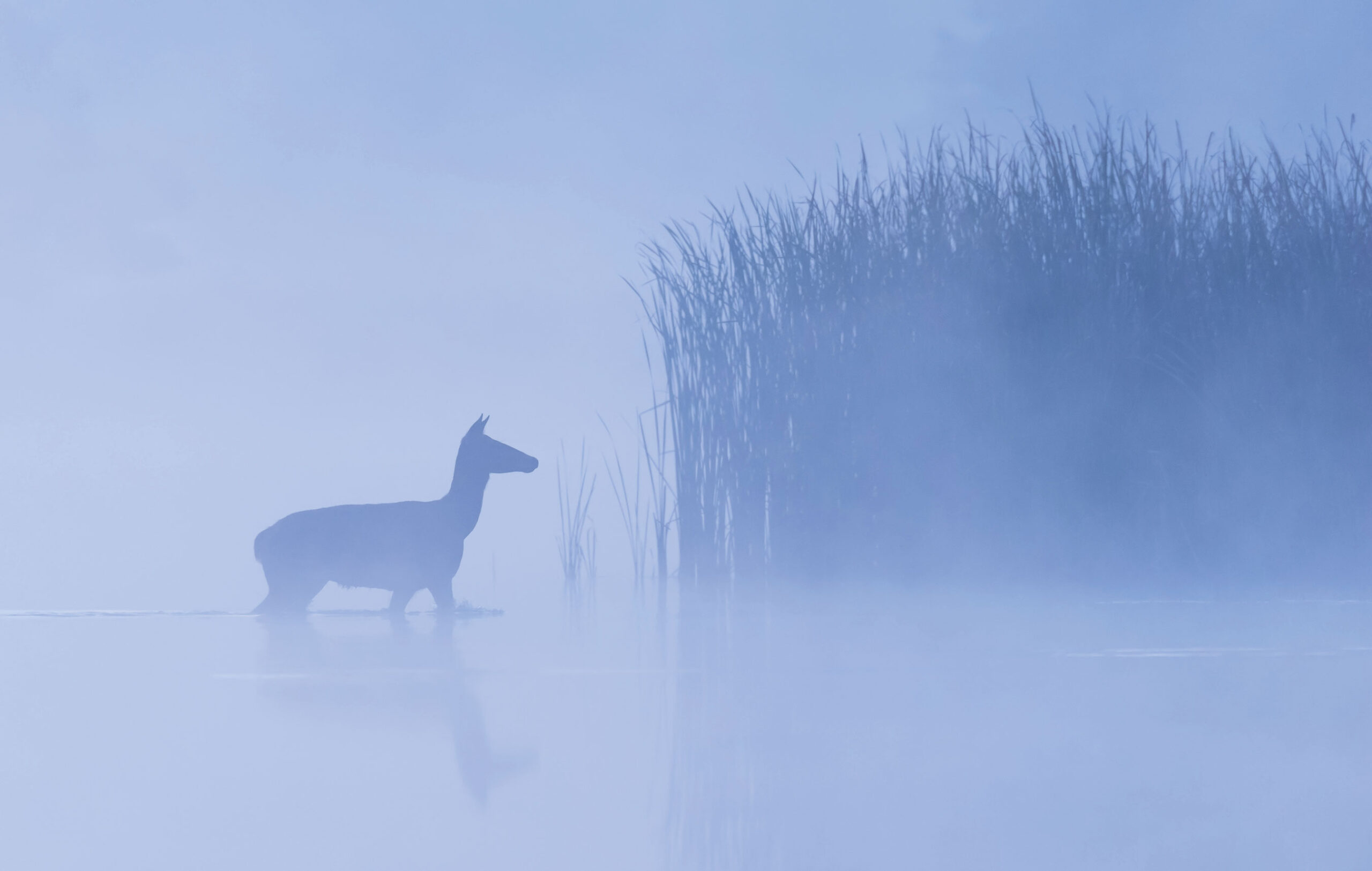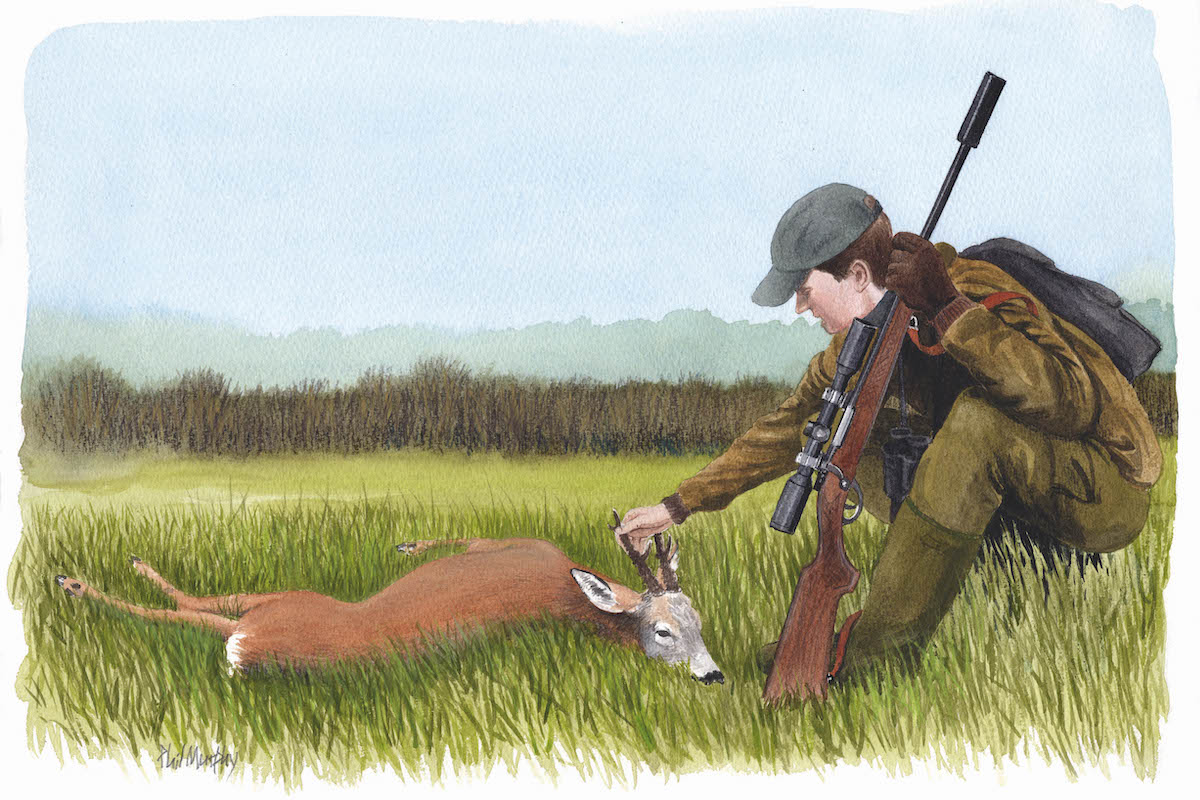Deer population: How do we control numbers across the UK?
Deer population and control are constant talking points amongst a number of different stakeholders, each of which needs to be heard.

We are currently in the grips of what is known as an “exponential deer population increase”. To put it another way, we’re in a situation where many areas have damaging numbers of deer. The important questions here are how and to whom or what are large numbers of deer causing damage.
How many deer is “too many” will of course depend upon the eye of the beholder. Where people are concerned, is it only really those directly impacted by numbers who should have a majority say?
Even then their opinion should be quantified. For some foresters and farmers just one deer is too many, while others are prepared to give and take a little, and some are totally against any form of control. Once again, as for all wildlife, the question of a healthy balance comes to the fore; the obvious decision here is deciding what is healthy and acceptable without impacting detrimentally upon biodiversity.
The history of both our and other countries’ deer populations is, to say the least, dramatic and surprising, and extremes of near eradication to almost plague proportions have occurred in several countries.
The white-tail deer of North America were all but eliminated from most places in the early 20th century. The estimated deer population was fewer than 500,000 back then; today it is in the region of 30 million and growing. Over-shooting was the primary cause of decline; under-shooting with the protection of all females the primary cause of explosion.
White-tail deer are responsible for over 1,000,000 car collisions each year and eat some 15,000,000 metric tons of food. A study in 13 north-eastern states estimated a yearly cost of $284,000,000 in crop damage, and found the deer are responsible for the disappearance of half of all plant species and are a major host of the tick that causes Lyme disease.
In the 18th century, roe were all but extinct from England, gone completely from Wales and scarce in Scotland, with hunting again being the major cause. With reintroduction and recolonisation, we now have between 500,000 and 1,000,000 across the country. Similarly, whereas the whole of Scandinavia saw roe reduced to less than 100 animals on one private estate in Sweden, today they now number in their millions.
These examples show us two things: firstly, that deer populations may be adversely affected in both directions by the influence of mankind, and secondly that healthy deer populations may be sparked from a small gene pool. Indeed, all the many Japanese sika in Ireland originate from perhaps three animals and I doubt our muntjac and Chinese water deer originate from many more.
What is to be done about our deer population?
Deer generally provide more financial and aesthetic benefits than most other mammals, but until wild boar become fully established, may also cause more harm and injury. Again we must ask ourselves how we define ‘too many deer’, but before laying out that stall, who are the main affected bodies wishing to express opinion?
Obviously landowners, farmers and foresters will be among the groups wishing to influence decisions, along with animal rights activists, hunters and ecologists, as well as the countryside-visiting section of the public, and public health officials concerned with both disease and accidents. There are plenty of conflicting opinions here, even among the same groups, so how do we decide?
Were it a deer park in question then certain deer population decisions are straightforward. Here, the deer herd’s health, bodyweight, parasite burden and indeed survival rate dictate the stocking density.
We may therefore make our first deer population-determining criteria as one based upon the deer’s own welfare. Is their welfare and condition suffering because numbers are too high for the carrying capacity of the land? It is meaningless to speak of a generally accepted density; we are unable to speak of a general habitat, so why would we presume to give a universally desired number of deer per hectare?
Again, reverting to a park situation, are the deer so heavily stocked that other flora and fauna are being damaged or destroyed? Is their impact upon the area such that other plants and animals are suffering? Deer populations may well survive in a park because of artificial feeding, or in the case of wild deer, an abundance of agricultural crops once all natural food has been removed, with other species suffering as a consequence.
A second determining criteria is therefore impact upon the ecology of the land and impact upon other living plants and animals.
Deer will thrive alongside modern agriculture and without doubt the fully stocked 12-month larder is sustaining large deer populations. In a harsh winter, deer numbers would be controlled in a natural environment devoid of agriculture and artificial feeding. Boom and bust deer populations would be the norm where predation was failing to keep numbers in check.
A third determining criteria is that of unacceptable damage to both farming and forestry. Therefore any accepted deer population size will depend upon the activity concerned. A few roe browsing on winter wheat causes no damage whatsoever and may even do it good. However, just one roe in a vineyard at the wrong time of year is likely to cause something of a commotion.
Finally, we have the situation of deer affecting humans and livestock through disease and physical contact. There are a number of notifiable diseases that may be spread from deer to both humans and livestock, the incidence of which will increase with a growing number of deer. We also have a situation of ever-increasing motor vehicle accidents involving deer. It stands to reason that the incidence of accidents rises in direct proportion to the population increase of both cars and deer.
In the UK there are an estimated 74,000 deer/vehicle collisions annually, resulting in 100,000 people injured and some 20 deaths. In the USA the average death toll is 200 people annually. It is also a fact deer play a major role in the spreading of Lyme disease and various other ailments to both man and livestock. This makes deer both Great Britain and the USA’s most dangerous animal.
Regardless of which interested party you may belong to, there is no disputing the fact that our present deer populations tick the boxes of all four overpopulation yardsticks. Numerous causes have been put forward for the currently burgeoning populations of all species.
History has shown us that deer may recover from bust to boom when conditions are put right. Just as with all species, those conditions are reduction in predation, sufficient food and suitable habitat, the very things which are presently missing for grey partridge, corn buntings and so many other of our threatened creatures. That our deer now enjoy all three life-giving criteria, along with mild winters, is without question. The solution to the problem? Simple. To reduce a population, any population, you must take out the females.
David Whitby’s article first appeared in the April 2016 issue of Shooting Gazette.








